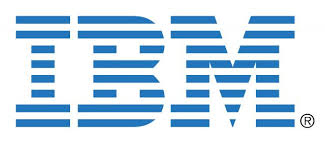Love at First Block: Sustainability With the Help of Blockchain
by Mark Herrema, Co-founder and CEO of Newlight Technologies
Blockchain Pulse: IBM Blockchain Blog
Over the past 17 years, my team at Newlight has been working to turn air and greenhouse gas into a material found throughout nature called AirCarbon.
There are a number of interesting things about AirCarbon: first, it is a meltable material, so as we look for solutions to help solve our ocean plastics problem, it can be used as a replacement for things like plastic and fiber; second, since it is made throughout nature, nature knows what to do with it, and will biodegrade it like a leaf or a banana peel if it ends up in the environment; and third, when made using renewable power, it is carbon-negative, reducing the amount of carbon in the air, like growing a tree.
A new solution needs the right partner
A few years ago, as we were preparing to launch AirCarbon to market in consumer fashion goods for the first time, my team reached out to IBM with a question: how can we apply blockchain technology to the AirCarbon production process? Our vision was simple: we wanted each of our AirCarbon-based fashion products to come with a unique blockchain number etched into it, so that if a consumer wanted to see where it came from and who independently verified its environmental footprint, they could use blockchain to do it.
Leverage the IBM Blockchain Ecosystem for new opportunities
It took about three years working with IBM and IBM Business Partner Cognition Foundry to make that vision a reality — from getting our production process integrated into the IBM Blockchain tracking system, including the IBM LinuxONE and IBM Cloud platform, and then building that tracking system into our manufacturing operations — but what emerged was something that we love.
Today, you can order one of our eyewear or accessory products and when you receive it, it will have a unique blockchain number laser-etched onto it — this number corresponds to the time when air and greenhouse gas were used to grow the AirCarbon used to make it, and by plugging it into our blockchain tracker, you can follow the various steps used to make it (and the specific time and date associated with those steps), concluding with the independent third party who verified its carbon impact and its associated lifecycle assessment report. In other words, you can see the journey that brought your product to life, and its specific carbon impact.
The future of accountability and tracing
Our hope is that this application of blockchain to product-specific environmental tracking not only serves our community by giving them an expanded level of insight into the journey and impact behind their products, but also makes us all ask why we don’t have this level of tracking on other products.
We think consumers should be given the opportunity to understand the carbon impact of all of their products, so that they can compare, contrast, understand, and then decide which path they want to take. We think the use of IBM Blockchain to do this offers a uniquely well-suited pathway to get there.
Let’s use blockchain for social good
Learn how blockchain and other innovators are putting blockchain to work against the world’s biggest challenges.
See more about blockchain for good
From time to time, we invite industry thought leaders, academic experts and partners, to share their opinions and insights on current trends in blockchain to the Blockchain Pulse blog. While the opinions in these blog posts are their own, and do not necessarily reflect the views of IBM, this blog strives to welcome all points of view to the conversation.

